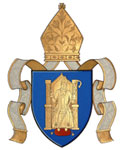 |
 |
News
New book on 400 years of history of St Macartin’s Cathedral
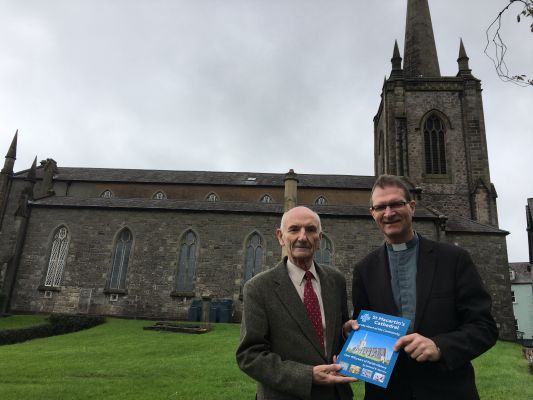
Mr Sam Morrow and Dean Kenneth Hall with the new book in advance of the launch.
A comprehensive new book ‘St Macartin’s Cathedral: ' At the Heart of the Community’ will be launched by The Bishop of Clogher, the Right Revd John McDowell, in the Cathedral Hall, Enniskillen, on Wednesday, 13th November at 7.30pm.
The hardback book, written by Sam Morrow OBE, extends to almost 400 pages and contains 500 photographs, many of which are of very considerable historic significance.
This book, with 42 chapters, records the establishment and development of the Church of Ireland Parish of Enniskillen and its church, now St Macartin’s Cathedral. A warm welcome is extended to all those interested, to the launch of this book.
Mr Morrow explains in his book that the church was established as part of the plan for the Plantation of Ulster but it also has an inheritance from the ancient Catholic Church. The cathedral has a strong link with the ancient parish of Inishkeen which had its church on Inishkeen Island. Inishkeen parish stretched from Enniskillen to the boundary of Tyrone beyond Clabby. The Plantation church in Enniskillen was known for many years as Inishkeen Church. Inishkeen, over the centuries, has had various spellings, including Eniskeene. The oldest piece of Communion silver still in use in the cathedral carries the name Eniskeene. Its inscription is in Latin and when translated reads: ‘The cup of the Parish Church of Eniskeene, the gift of Edward Davis, Gent., in the year 1638.’
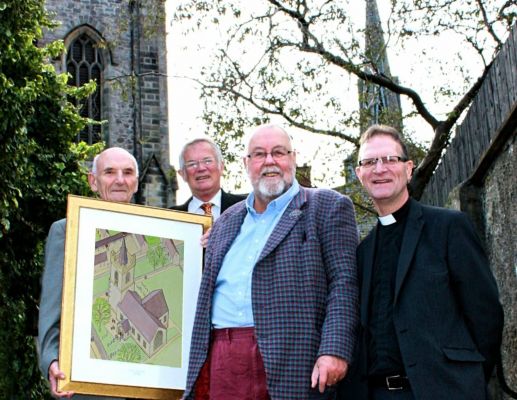
A drawing of the original church is handed over.
Only part of the original Plantation church remains, part of the tower and south wall. The original church was smaller than the present-day cathedral. It had a north transept and its entrance was by way of a porch in the south wall. Mr Richard Pierce, the noted architect, now retired, has produced a watercolour drawing of the original church and this is featured in the book. The earliest headstones in the graveyard date from 1625. The Cole (Enniskillen) family vault is under the cathedral and the entrance stone originally carried the date 1627. In addition to the church in Enniskillen the Inishkeen parish had a chapel of ease at Pubble as a place of worship and with a graveyard.
The original Enniskillen church was enlarged in 1842 and the chancel was extended in 1889.
Until 1869 the Church of Ireland was the Established Church which meant that it had some responsibilities akin to a government department. It had a duty to collect tithes and a tax known as cess from all, irrespective of religion, which made it unpopular.
Over the years from its establishment its clergy and people have experienced many challenges in Enniskillen. The 1641 rising and the defence of the town in 1689 were two such challenges. The rector of Enniskillen, the Presbyterian minister and leading members of the church, including Allan Cathcart, joined in the defence of the town against King James’s army. Cathcart and others played an important part in winning the Battle of the Boyne for King William. Allan Cathcart and others from the church subsequently presented an address to King William for their ‘Deliverance’ Allan Cathcart presented a silver flagon for use in the Communion services. This flagon, dated 1707, is in regular use in the cathedral. One of the bells in the cathedral tower was founded from bells made from canon captured at the Boyne and presented to the Enniskilleners by King William.
Enniskillen men played an important role in supporting King William against the army of King James II. This conflict led to the establishment of two British Army regiments bearing the old name of the town, Inniskilling. The cathedral is home for many of the laid-up standards and memorials of these regiments and within its historic walls is the Inniskillings Regimental Chapel.
The cathedral, because of its size and central position for the Church of Ireland people of the diocese, was consecrated as a cathedral in 1923. The cathedral contains many memorials to significant individuals, including some very fine stained-glass window memorials.
Over the centuries the pupils of the Royal School have worshiped in Enniskillen church and include such notable churchmen as Henry Francis Lyte, who wrote hymns including ‘Abide with Me’ and the Blessed John Sullivan SJ.
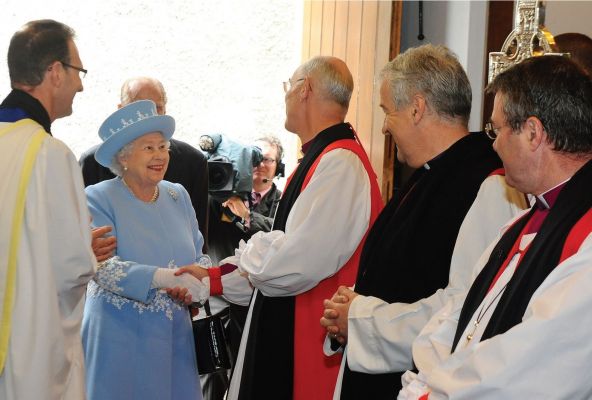
Queen Elizabeth II during her visit to Enniskillen.
In more recent times, St Macartin’s Cathedral has made a major contribution in developing community relations and has hosted the most important people in the United Kingdom, at acts of worship, remembrance and thanksgiving. These included Queen Elizabeth II and the Prime Minister, Mrs Margaret Thatcher.
St Macartin’s has been served by 28 rectors, and many curates, dating from 1622. A list of churchwardens who have served the parish from 1622 exists. All of this information, including the names on the headstones in Enniskillen and Pubble graveyards, is included in the book.
About the Author …….

The author Mr. Sam Morrow.
The author of the book, Mr Samuel Boyd Morrow OBE, has served as a member of the select vestry of the Parish of Enniskillen continuously since 1968, the year in which he was appointed rector’s churchwarden by Dean Thomas Clements. Since then he has served a further three years as rector’s churchwarden and nine years as Glebewarden. He was elected honorary secretary in 1989 and has fulfilled that role since then.
He has served as an elected member of a number of diocesan and Church of Ireland bodies and he is a trustee and member of the Board of Governors of Enniskillen Royal Grammar School.
During the recent renovation of the Cathedral Hall, Mr Morrow acted as Project Manager.
Mr. Morrow spent a career in agricultural administration. Following his education at Portora Royal School and Queen’s University, Belfast, where he graduated with a degree in agriculture, he was appointed as an agricultural adviser in County Antrim by the then Ministry of Agriculture. In 1966 he was appointed by the Ministry to the post of Deputy County Agricultural Executive Officer for Fermanagh. He succeeded as County Agricultural Executive Officer in 1977. In his last two years in the Civil Service, before retiring in 1996, he served as Principal of Enniskillen Agricultural College in addition to his role as County Agricultural Development Officer. He was appointed OBE in The Queen’s New Year Honours in 1996 for services to the Department of Agriculture for Northern Ireland.
His latest book is the fifth he has written. Other books include; ‘The Church of Ireland Parishes of Tempo and Clabby: ' a Shared Heritage’; ‘Clabby on the Map - The Church of Ireland Parish of Clabby and its People’; ‘Farming in County Fermanagh: ' Development in the Twentieth Century’; and ‘A Landlords’ Legacy:' the Fermanagh Farming Societies’ contribution to development of agriculture in the nineteenth and twentieth centuries.’
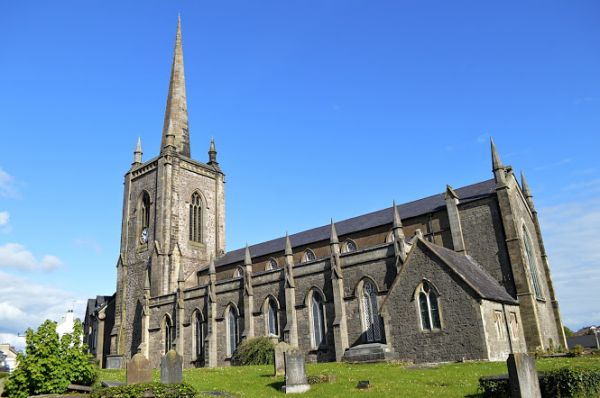
St Macartin's Cathedral.